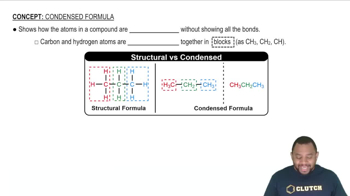Here are the essential concepts you must grasp in order to answer the question correctly.
Condensation Reaction
A condensation reaction is a chemical process where two molecules combine to form a larger molecule, releasing a small molecule, often water, as a byproduct. This type of reaction is crucial in polymer chemistry, as it allows for the formation of long-chain molecules from smaller monomer units, such as the combination of succinic acid and ethylenediamine.
Recommended video:
Balanced Chemical Equation
A balanced chemical equation represents a chemical reaction with equal numbers of each type of atom on both sides of the equation. Balancing is essential to obey the law of conservation of mass, ensuring that matter is neither created nor destroyed during the reaction. In the context of polymer formation, it is important to accurately depict the reactants and products involved.
Recommended video:
Balancing Chemical Equations
Polymer Formation
Polymer formation involves the linking of monomers through chemical reactions to create larger, more complex structures known as polymers. In this case, succinic acid and ethylenediamine react to form a polymer through a condensation reaction, resulting in the release of water and the creation of amide linkages, which are characteristic of many biological and synthetic polymers.
Recommended video:

 Verified step by step guidance
Verified step by step guidance


